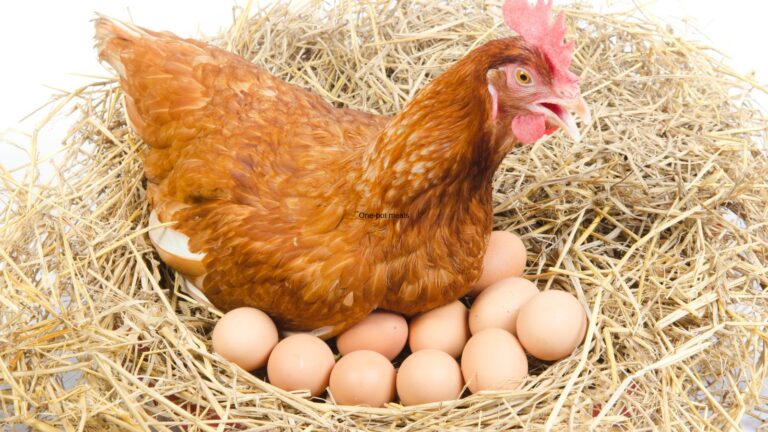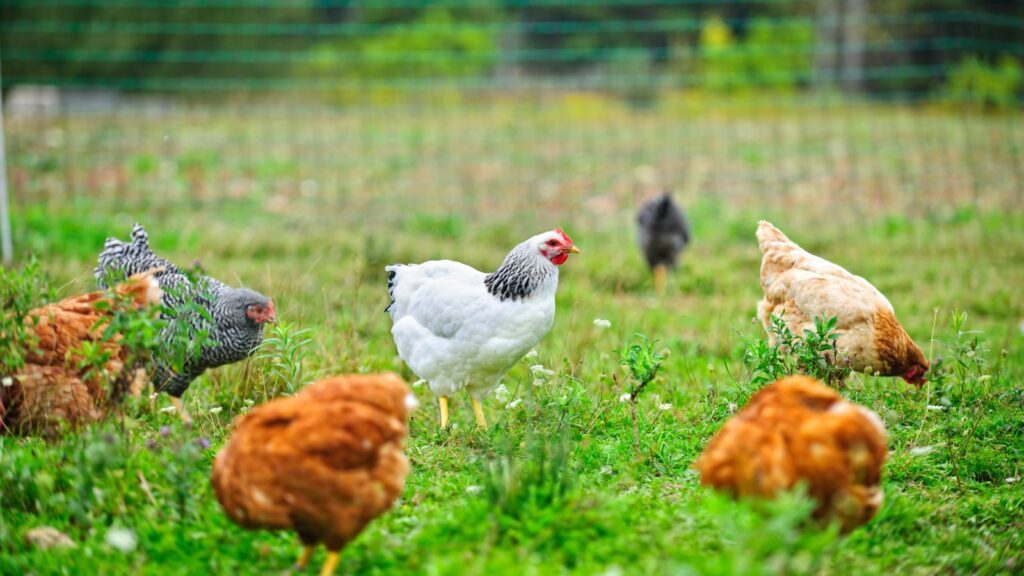
Choosing the right type of eggs can be a confusing task, especially when faced with labels like “cage-free” and “free-range.” However, understanding the differences in how these eggs are produced is crucial for making informed decisions as consumers.
This blog post will delve into cage-free eggs vs free-range eggs, discussing their respective benefits and drawbacks while exploring factors such as living conditions for hens, the nutritional content of the eggs, environmental impact, and cost differences.
Key Takeaways
- Cage-free eggs come from hens that are not confined to battery cages, while free-range eggs come from hens that have access to the outdoors and more natural behaviors.
- Free-range chickens tend to experience less stress and disease than their cage-free counterparts due to being able to engage in natural behaviors and having access to varied diets from outdoor sources.
- When it comes to nutritional content, all types of eggs provide a good source of protein and other essential nutrients like choline, but pasture-raised and organic eggs may contain higher levels of certain vitamins and fatty acids.
- Both cage-free and free-range options can cost up to double or even triple the price of conventional eggs because they require higher production costs for improved living conditions for hens; consumers should research brands prioritizing sustainable farming practices when making purchasing decisions.
Understanding Cage-Free Eggs And Free-Range Eggs
Cage-free eggs come from hens that are not confined to battery cages, while free-range eggs come from hens that have access to the outdoors.
Defining Cage-Free Eggs And Free-Range Eggs
Cage-free eggs come from hens that are not confined to battery cages, allowing them more space to move and engage in natural behaviors such as walking, perching, and spreading their wings.
On the other hand, free-range eggs are produced by hens that have both indoor housing and access to the outdoors. The amount of available outdoor space varies among producers; however, a general guideline requires at least 2 square feet of outside area per bird.
Raising Practices For Hens In Each System
Hen-raising practices differ between cage-free and free-range systems. In cage-free facilities, hens are not confined to battery cages, giving them more space to move around and perch.
However, these hens typically do not have access to the outdoors. On the other hand, in free-range systems, hens have outdoor access for a minimum of 2 square feet per bird.
Additionally, free-range hens tend to experience less stress and disease than their cage-free counterparts due to being able to engage in natural behaviors and having access to varied diets from outdoor sources.
Differences Between Cage-Free And Free-Range Eggs
Living conditions for hens, the nutritional content of eggs, environmental impact, and cost differences are just a few of the factors that set cage-free and free-range eggs apart.
Living Conditions For Hens
The living conditions for hens differ significantly between cage-free and free-range systems. In the cage-free system, hens have more space to move around compared to caged chickens but do not have access to outdoor areas like free-range hens.

On the other hand, free-range hens have access to the outdoors where they can enjoy fresh air and sunshine. They are less likely to experience disease and stress than their caged counterparts.
However, this outdoor space is often limited and must meet minimum standards set by certifying bodies such as USDA Organic or Certified Humane.
Nutritional Content Of Eggs
When it comes to nutritional content, eggs from cage-free and free-range hens are very similar to those from conventionally raised hens. However, pasture-raised and organic eggs may contain higher levels of certain nutrients such as vitamins A, D, and E as well as omega-3 fatty acids.
This is because these types of chickens have access to a more natural diet that includes insects, grasses, and plants. Additionally, the living conditions for pasture-raised and organic chickens tend to be better overall which can positively impact their health.
Cost Differences
Cage-free and free-range eggs are generally more expensive than conventional eggs due to the added costs of providing better living conditions for hens. The cost difference between these two types of eggs may vary depending on the region, farm, and brand.
For example, in some areas, cage-free eggs may be cheaper than free-range while in others it could be the opposite. However, when comparing them to conventional eggs, both cage-free and free-range options can cost up to double or even triple the price.
Pros And Cons Of Choosing Cage-Free Eggs
Choosing cage-free eggs can mean supporting the humane treatment of animals and potentially higher quality living conditions for hens, but it may also result in increased costs for consumers and potential drawbacks such as lower air quality in facilities.
Advantages Of Choosing Cage-Free Eggs
Choosing cage-free eggs has many advantages. For one, hens are not confined in small cages and have more space to move around and stretch their wings. This means that they are less likely to experience stress and disease, resulting in healthier chickens who produce better-quality eggs.
Moreover, cage-free farming generally results in higher environmental sustainability than conventional egg production.
Overall, purchasing cage-free eggs provides various benefits for the consumer as well and helps animal welfare.
Potential Drawbacks Of Cage-Free Eggs
While cage-free eggs may seem like a more humane and ethical option, there are potential drawbacks to consider. One of the main concerns is that cage-free facilities can still be crowded and lead to increased aggression among hens.
The lack of space and privacy can also lead to lower air quality, which can impact the health of both the chickens and workers in the facility. Additionally, because cage-free eggs are more expensive to produce than conventional eggs, they often come with a higher price tag for consumers.
Pros And Cons Of Choosing Free-Range Eggs
Free-range eggs have a lower environmental impact and offer more nutritional benefits due to the hens’ access to outdoor areas, but they can be more expensive and may not be widely available; read on to learn more about making an informed choice.
Advantages Of Choosing Free-Range Eggs
Choosing free-range eggs has several advantages. First, the hens that lay these eggs have access to the outdoors and are able to engage in natural behaviors like scratching and pecking for food.
This means that the chickens are typically healthier and less stressed than those kept in cages or even in some cage-free facilities.
By choosing free-range eggs, consumers are also supporting more sustainable farming practices. Free-range farms often prioritize environmental sustainability by using renewable resources like solar power and wind turbines while minimizing their use of synthetic fertilizers and pesticides.
Additionally, these farms may work with local communities to provide jobs or support other sustainable initiatives.
Potential Drawbacks Of Free-Range Eggs
While free-range eggs are often seen as the more ethical and sustainable choice, there are some potential drawbacks to consider. One issue is that hens who have access to the outdoors may be more susceptible to predators, such as foxes or raptors.
This can increase stress and mortality rates among the flock.
Another concern with free-range eggs is that they may not always be labeled accurately. While definitions for “free-range” do exist, they are not regulated by the government in the same way as other food labeling terms like “organic” or “gluten-free.” This means that producers may use misleading labels on their products without facing any consequences.
Making An Informed Choice
To make an informed choice when choosing between cage-free and free-range eggs, it is important to read labels and certifications, research different brands and farms, and consider your personal values and budget.
Reading Labels And Certifications
It’s important to know how to read egg labels and certifications when you’re making an informed decision about what type of eggs to buy. Look for labels that say “cage-free” or “free-range” if you want to make sure the hens were not confined in small cages.
Certifications such as Certified Humane or Animal Welfare Approved can also give you peace of mind that the hens were treated humanely and had access to outdoor areas. Additionally, choosing pasture-raised or organic eggs can ensure that the hens had more natural living conditions and diets.
Researching Brands And Farms
To make an informed choice about the eggs you buy, it’s essential to research the brands and farms that produce them. One way to evaluate a brand or farm is to look for certifications from reputable organizations like Certified Humane and Animal Welfare Approved.
It’s also helpful to do some digging into specific brands or farms to learn more about their practices and values. Check out their website and social media pages for information on how they raise their chickens, what they feed them, and how they treat any health issues or illnesses.
You can also look for reviews from other consumers who have purchased eggs from those producers.
Considering Personal Values And Budget
When it comes to choosing between cage-free and free-range eggs, personal values and budget play an important role in the decision-making process. As an off-grid living enthusiast, you may value sustainability and ethical farming practices above all else.
In this case, pasture-raised and organic eggs might be worth considering despite their higher price points.
It’s also important to note that egg labeling can sometimes be misleading or confusing. Reading labels carefully and researching brands and farms can help ensure that your chosen eggs align with your personal values.
Additionally, understanding the differences between various types of egg production systems (such as cage-free vs free-range) can help inform your decision-making process in terms of both cost and ethics.
Conclusion
When it comes to choosing between cage-free and free-range eggs, there are a number of factors to consider. Both types offer benefits and drawbacks, so it’s important to weigh them carefully before making a decision.
Whether you’re concerned about animal welfare, environmental impact, or nutritional content, understanding the differences between these two options can help inform your choice.
By reading labels and certifications, researching brands and farms, and considering your own personal values and budgetary concerns, you can make an informed decision that aligns with your needs.
FAQs:
1. What does “cage-free” mean when it comes to eggs?
Cage-free refers to a type of egg production where the hens are not kept in cages and instead have access to open spaces inside barns or other indoor enclosures. While they may still be confined indoors, cage-free systems provide more freedom of movement compared to traditional cages.
2. How do free-range eggs differ from cage-free eggs?
Free-range eggs come from hens that are allowed to roam outdoors and have access to natural sunlight, fresh air, and open spaces for grazing or dustbathing. This means that the birds have more opportunity for exercise and socialization with their flockmates.
3. Which type of egg production is better for animal welfare?
While both cage-free and free-range systems provide some level of improved animal welfare compared to caged production, many animal advocates argue that free-range environments allow hens the most space and natural behaviors possible.
4. Do different types of egg production affect the taste or nutritional value of eggs?
The difference between cage-free vs free-range egg taste or nutrition is largely anecdotal; however, some studies suggest that roaming chickens tend to eat a more varied diet which could lead to differences in nutrient content such as increased levels of omega-3 fatty acids in outdoor-raised chickens’ diets compared with commercial chicken feed formulations used by indoor producers.